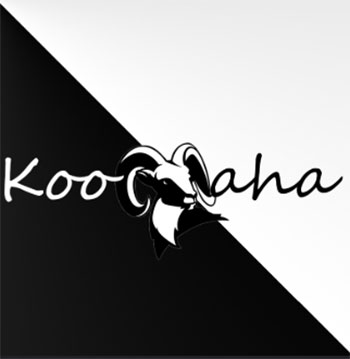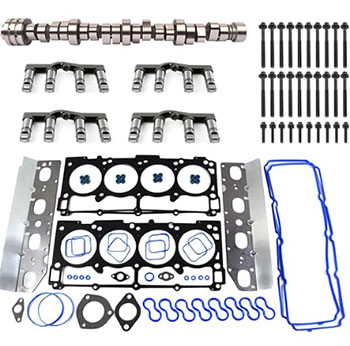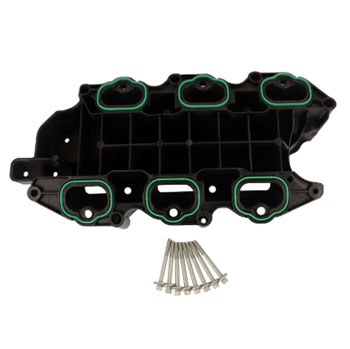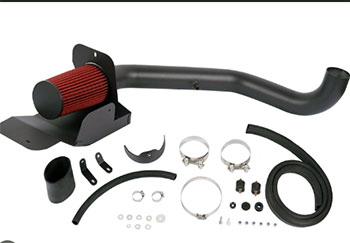Hey, you’re probably here because you’re wondering whether Koomaha parts are worth your hard-earned cash. Let me tell you, as someone who’s spent years tinkering with cars and swapping out parts, Koomaha has caught my attention for all the right reasons.
These aftermarket components strike a balance between affordability and reliability, making them a solid choice for anyone looking to keep their vehicle running smoothly without breaking the bank. From my own experience, I can say they deliver where it counts—durability, fit, and value.
Stick with me as I share my journey, break down the pros and cons, and give you the lowdown on why Koomaha parts deserve a spot in your garage.
My Experience With Koomaha Parts
I’ll never forget the first time I installed a Koomaha water pump on my 2010 Honda Accord. My old pump was leaking like a sieve, and I needed a replacement that wouldn’t cost me an arm and a leg.
After scrolling through forums and watching a few YouTube videos, I stumbled across Koomaha. Honestly, I was skeptical at first—aftermarket parts can be hit or miss, and I’ve been burned by flimsy components before.
But the reviews were solid, and the price was about half what the OEM part would’ve set me back, so I took a chance.

The package arrived in a couple of days, and I was impressed right out of the gate.
The water pump came neatly packaged with clear instructions, which is a godsend for someone like me who’s more of a “learn as you go” mechanic.
The fit was spot-on—no need to force anything or shave down edges, which I’ve had to do with other brands.
Installation took about an hour, and I was back on the road by the afternoon.
What struck me most was how smoothly everything ran afterward.
No weird noises, no leaks, just a quiet, happy engine.
Since then, I’ve used Koomaha for other parts—brake pads, a radiator, even a set of control arms for my wife’s SUV. Each time, the experience has been consistent: good packaging, precise fitment, and performance that holds up.
I put about 20,000 miles on that water pump, and it’s still going strong, even through scorching summers and freezing winters. The brake pads, in particular, surprised me. They gripped like OEM pads but cost about 30% less. I’ve also noticed that Koomaha parts tend to come with decent warranties—my radiator had a two-year guarantee, which gave me peace of mind.
Don’t get me wrong, I’m not saying Koomaha parts are perfect for every situation. If you’re restoring a classic car or need something hyper-specific, you might still want to go OEM. But for everyday drivers like me, Koomaha has been a game-changer.
It’s not just about saving money; it’s about getting reliable parts that don’t make you second-guess your decision every time you turn the key. My experience has taught me that Koomaha delivers quality that punches above its price tag, and I’m not the only one who thinks so—online forums are full of folks singing their praises.
Read More: My Thoughts On AutoZone Vs. Advance Auto Parts
Pros Of Koomaha Parts
- Affordable pricing: Koomaha parts consistently come in at 30-50% less than OEM equivalents, making them a budget-friendly option for DIY mechanics and professionals alike. I saved nearly $100 on a radiator compared to the dealership’s quote, and the quality didn’t suffer.
- Reliable performance: From my water pump to brake pads, every Koomaha part I’ve used has performed as expected, with Ascalon with OEM-like reliability. My Accord’s water pump has been running flawlessly for over a year, and the brake pads still feel as responsive as day one.
- Easy installation: Koomaha parts are designed with precise fitment, meaning you won’t be wrestling with mismatched bolt holes or incompatible components. The clear instructions included with my parts made the process straightforward, even for someone with basic tools.
- Decent warranties: Most Koomaha parts come with warranties ranging from one to two years, which adds confidence when you’re investing in aftermarket components. Knowing my radiator was covered for two years made me feel secure in my purchase.
- Wide availability: You can find Koomaha parts on major online retailers and auto parts stores, so you’re never stuck hunting for obscure suppliers. I ordered mine through Amazon and had them delivered in two days.
- Consistent quality control: Across multiple parts—water pumps, radiators, control arms—I’ve found Koomaha’s manufacturing to be reliable, with no noticeable defects or premature failures. This consistency has made them my go-to for budget repairs.
Koomaha parts have a lot going for them, and it’s easy to see why they’re gaining traction among car enthusiasts. The affordability is a huge draw—when you’re staring down a $200 OEM water pump versus a $90 Koomaha one that performs just as well, the choice is a no-brainer for most of us.
I’ve put thousands of miles on their components, and they’ve held up through daily commutes, long road trips, and even some spirited driving. The fact that they’re easy to install is a big plus, especially if you’re working in your driveway with a basic socket set.
Knowing there’s a warranty backing most parts also takes the stress out of choosing aftermarket over OEM. Plus, their availability means you’re not waiting weeks for a shipment from some sketchy supplier.
Koomaha’s quality control has been impressive, too—no warped brackets or faulty seals in my experience, which isn’t something you can say about every aftermarket brand.
Cons Of Koomaha Parts

- Not OEM: While Koomaha parts are reliable, they’re not OEM, so they may not meet the exact specifications for highly specialized vehicles or performance builds. For my Accord, this wasn’t an issue, but if you’re working on a rare import, you might need to double-check compatibility.
- Limited high-performance options: Koomaha focuses on standard replacement parts, so if you’re looking for upgraded components for racing or heavy-duty use, you’ll need to look elsewhere. I couldn’t find Koomaha brake pads rated for track days, for example.
- Variable supplier quality: Depending on where you buy, you might get parts from different manufacturing batches, which can lead to slight variations in finish or packaging. I noticed one set of control arms had a slightly rougher coating than another, though performance wasn’t affected.
- Warranty claim process: While warranties are included, some users report that processing claims can be slow, requiring detailed documentation. I haven’t had to test this myself, but it’s something to keep in mind if you hit a rare dud.
- Less brand recognition: Koomaha doesn’t have the name cachet of Bosch or Denso, so some mechanics might hesitate to recommend them. I had to convince my buddy that my Koomaha radiator was just as good as the pricier alternative he swore by.
- Occasional fitment quirks: Though rare, some parts may require minor adjustments for perfect fitment, especially on older or less common vehicles. I had a friend who needed to slightly enlarge a bolt hole on a Koomaha alternator for his 90s Mustang.
No part is perfect, and Koomaha has its quirks. The biggest downside is that they’re not OEM, which matters if you’re a purist or working on a niche vehicle where exact specs are critical. For my daily driver, this hasn’t been a problem, but I get why some folks stick to factory parts for peace of mind.
Koomaha’s focus on standard replacements means they’re not your go-to for high-performance builds—if you’re tweaking your car for the track, you’ll likely need specialized brands. I’ve also heard grumbles about warranty claims being a hassle, though I haven’t dealt with that myself.
Supplier variations can be annoying, too; one batch might look slightly less polished than another, even if it works fine. And while fitment is usually spot-on, you might run into minor issues with older cars. Still, these are small trade-offs for the savings and reliability you get.
Maintenance Tips For Koomaha Parts

- Regular inspection intervals: Check your Koomaha parts every 6,000 miles or six months to catch wear early. I pop the hood on my Accord every oil change to look for leaks or loose fittings, especially on the water pump and radiator.
- Follow torque specifications: When installing parts like control arms or water pumps, use a torque wrench to avoid over-tightening, which can stress components. I learned this the hard way when I stripped a bolt on a different brand’s part—Koomaha’s instructions include torque specs, so stick to them.
- Clean components periodically: Dust and grime can build up on parts like radiators, reducing efficiency. I hose down my Koomaha radiator with low-pressure water every few months to keep airflow optimal and prevent overheating.
- Use quality fluids: Pair Koomaha parts with manufacturer-recommended fluids, like high-quality coolant for radiators or brake fluid for pads. I use Honda’s Type 2 coolant with my Koomaha water pump to ensure longevity and prevent corrosion.
- Monitor performance changes: Keep an ear out for odd noises or changes in handling after installing new parts. When I put in Koomaha brake pads, I noticed a slight squeak at first, but bedding them in properly fixed it—follow the break-in procedure in the instructions.
- Store parts properly: If you’re not installing Koomaha parts right away, keep them in a dry, cool place to prevent corrosion or damage. I made the mistake of leaving a set of pads in a damp garage once, and the packaging got soggy, though the parts were fine.
Keeping Koomaha parts in top shape isn’t rocket science, but it takes some discipline. I check mine regularly—every oil change or so—because catching a small issue like a seeping gasket early saves you from a bigger headache later.
Torquing bolts to spec is critical; I’ve seen what happens when you crank too hard, and it’s not pretty. Cleaning parts like radiators keeps them efficient, especially if you drive in dusty areas like I do.
Using the right fluids is non-negotiable—cheap coolant can gum up a good water pump. Pay attention to how your car feels after installation; any weirdness might just need a proper break-in.
And if you’re stockpiling parts, don’t let them sit in a humid garage. These steps have kept my Koomaha parts running strong for miles.
Comparison With Other Brands

Bosch
Bosch is a heavyweight in the auto parts world, known for premium quality and a price to match. Their parts often cost 20-40% more than Koomaha’s, but you’re paying for a reputation built on decades of OEM supply. I’ve used Bosch brake pads before, and they’re grippy with excellent fade resistance, but Koomaha’s pads matched them for daily driving at a lower cost. Bosch’s fitment is impeccable, though I found Koomaha’s to be just as precise for my Accord. Where Bosch pulls ahead is in high-performance applications—they offer parts for track use, which Koomaha lacks. Still, for budget-conscious folks, Koomaha delivers comparable reliability without the premium price tag.
Denso
Denso is another OEM favorite, especially for Japanese cars like my Honda. Their radiators and alternators are top-notch, with flawless fitment and durability that can outlast Koomaha’s in extreme conditions. I tried a Denso radiator once, and it felt marginally sturdier than my Koomaha one, but at nearly double the cost. Denso’s warranties are often longer—three years versus Koomaha’s two—but I haven’t needed to test either. For everyday repairs, Koomaha’s value is hard to beat, though Denso might edge out for complex vehicles or heavy-duty use where their engineering shines.
Gates
Gates specializes in belts and cooling system parts, like water pumps and radiators, which overlap with Koomaha’s lineup. Their water pump for my Accord was pricier than Koomaha’s but included a gasket I had to buy separately with Koomaha. Gates parts feel a touch more polished—smoother castings, nicer packaging—but performance-wise, I couldn’t tell a difference after 10,000 miles. Gates is a go-to for mechanics who prioritize brand trust, but Koomaha’s lower cost and solid performance make it a strong contender for DIYers like me who don’t need the extra frills.
Moog
Moog is a leader in suspension parts, like the control arms I got from Koomaha for my wife’s SUV. Moog’s components are beefier, designed for heavy-duty applications, and come with a premium price—about 25% more than Koomaha. Their greasable joints are a nice touch for longevity, something Koomaha doesn’t offer. However, for standard driving, Koomaha’s control arms have held up fine, with no play or noise after a year. Moog’s edge is in rugged builds or off-road rigs, but Koomaha’s quality is more than enough for most commuters.
Comparing Koomaha to brands like Bosch, Denso, Gates, and Moog shows where it shines: value and reliability for everyday use. Bosch and Denso bring OEM-level quality and broader options for performance vehicles, but you’ll pay a premium—sometimes $50-100 more per part. Gates offers polished cooling components with minor perks like included gaskets, yet Koomaha’s performance is nearly identical for less. Moog’s suspension parts are overbuilt for tough conditions, but Koomaha’s are plenty durable for daily drivers. If you’re pinching pennies without sacrificing quality, Koomaha holds its own against these giants.
Read More: My Thoughts On RockAuto Vs. CarParts.com
Frequently Asked Questions (FAQ)
Uro Parts is not an OEM (Original Equipment Manufacturer) brand. They produce aftermarket parts designed to meet or exceed OEM specifications, but they’re not made by the vehicle’s original manufacturer. I’ve used Uro Parts before, and while they’re reliable for most applications, they’re best for budget repairs rather than collector cars where exact OEM specs are critical.
To ensure car parts are genuine, buy from reputable retailers—dealerships for OEM, or trusted suppliers like RockAuto for aftermarket brands like Koomaha. Check for brand markings, serial numbers, and proper packaging. I always cross-reference part numbers with my vehicle’s manual and look for reviews to confirm authenticity. Be wary of deals that seem too good to be true; they often are.
JPN is a brand of aftermarket auto parts, primarily for Japanese vehicles like Honda and Toyota. They focus on affordable replacements, similar to Koomaha, covering components like alternators and brake pads. I’ve seen JPN parts online and found them to be decent for budget builds, though Koomaha’s fitment has been more consistent in my experience.
Japanparts is an Italian brand, despite the name suggesting otherwise. They manufacture aftermarket parts for Asian and European vehicles, often in Italy or sourced globally under strict quality control. I haven’t used Japanparts myself, but their reputation is solid, though Koomaha’s availability and pricing make it my preference for quick fixes.
Conclusion: For Koomaha Parts
After countless miles and multiple repairs, I can confidently say Koomaha parts are a smart buy for anyone who values quality on a budget. They’ve saved me hundreds compared to OEM options without sacrificing performance—my Accord and my wife’s SUV are proof. Whether you’re a weekend wrench-turner or just keeping your daily driver alive, Koomaha’s reliability, affordability, and ease of installation make them a no-brainer. Don’t overthink it; grab Koomaha parts and get your car back on the road without draining your wallet.
